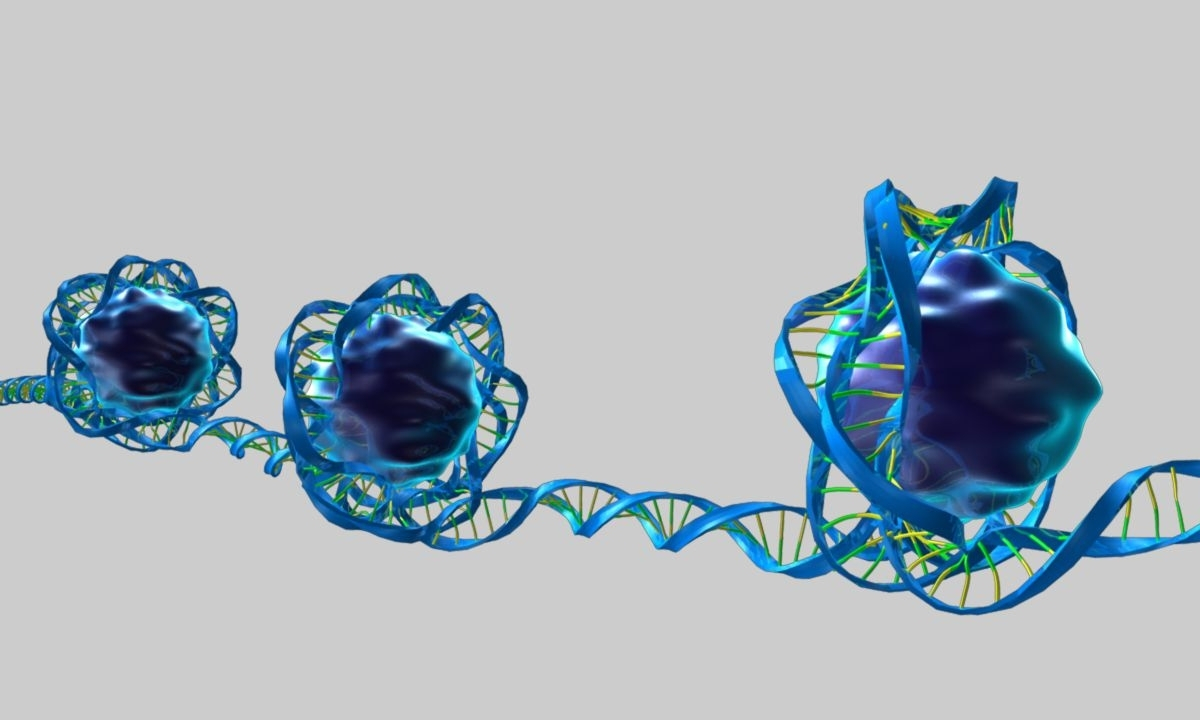
What is a nucleosome? A nucleosome is the basic unit of DNA packaging in eukaryotic cells. Imagine a spool of thread; the nucleosome acts like the spool, while the DNA wraps around it like the thread. Each nucleosome consists of a segment of DNA wound around eight histone proteins. This structure helps to compact the DNA, making it fit inside the cell nucleus. Nucleosomes play a crucial role in gene regulation, as they control access to DNA for transcription. Understanding nucleosomes is key to grasping how genes are turned on or off, which impacts everything from cell function to disease development.
What is a Nucleosome?
A nucleosome is a fundamental unit of DNA packaging in eukaryotic cells. It consists of a segment of DNA wound around a core of histone proteins. This structure helps organize and compact DNA, making it more manageable for the cell.
- Nucleosomes are composed of DNA and histone proteins.
- Each nucleosome contains about 147 base pairs of DNA.
- The DNA wraps around a histone octamer, which includes two copies each of histones H2A, H2B, H3, and H4.
- Nucleosomes are connected by linker DNA, which varies in length.
- Histone H1 binds to the linker DNA, helping to stabilize the nucleosome structure.
The Role of Nucleosomes in Gene Regulation
Nucleosomes play a crucial role in regulating gene expression. By controlling the accessibility of DNA to transcription factors and other proteins, nucleosomes can either promote or inhibit gene transcription.
- Nucleosomes can block access to DNA, preventing transcription.
- Chromatin remodeling complexes can reposition nucleosomes to expose specific DNA regions.
- Histone modifications, such as acetylation and methylation, can alter nucleosome structure and function.
- Acetylation of histones generally promotes gene expression by loosening nucleosome structure.
- Methylation of histones can either activate or repress gene expression, depending on the specific histone and modification site.
Nucleosome Dynamics
Nucleosomes are not static structures; they can be dynamically assembled, disassembled, and repositioned. This dynamic nature is essential for various cellular processes, including DNA replication, repair, and transcription.
- Nucleosome assembly involves the deposition of histone proteins onto DNA.
- Histone chaperones assist in the assembly and disassembly of nucleosomes.
- ATP-dependent chromatin remodelers can slide nucleosomes along DNA.
- Nucleosome disassembly is necessary for DNA replication and repair.
- During transcription, RNA polymerase can temporarily displace nucleosomes to access DNA.
Nucleosome Positioning
The positioning of nucleosomes on DNA is not random. Specific DNA sequences and cellular factors influence where nucleosomes are placed, affecting gene regulation and chromatin structure.
- Certain DNA sequences, known as nucleosome positioning sequences, have a high affinity for histone binding.
- DNA sequence flexibility can influence nucleosome positioning.
- Transcription factors can compete with nucleosomes for binding sites on DNA.
- DNA methylation can affect nucleosome positioning and stability.
- Nucleosome positioning can create nucleosome-free regions, which are often found near gene promoters.
Nucleosome Structure and Function
The structure of nucleosomes is highly conserved across eukaryotic species, reflecting their essential role in DNA packaging and regulation.
- The histone octamer forms a disc-like structure around which DNA is wrapped.
- Histone tails extend from the nucleosome core and can be modified to regulate nucleosome function.
- Nucleosomes can form higher-order structures, such as the 30-nanometer fiber, for further DNA compaction.
- The 30-nanometer fiber is thought to be a zigzag or solenoid structure.
- Higher-order chromatin structures are important for chromosome organization during cell division.
Nucleosomes and Epigenetics
Epigenetic modifications to histones and DNA can influence nucleosome structure and function, affecting gene expression and cellular identity.
- Histone acetylation is associated with active chromatin and gene expression.
- Histone methylation can mark active or inactive chromatin, depending on the context.
- DNA methylation typically represses gene expression by promoting nucleosome stability.
- Epigenetic modifications can be inherited during cell division, maintaining cellular identity.
- Environmental factors can influence epigenetic modifications and nucleosome dynamics.
Nucleosomes in Disease
Abnormal nucleosome structure and function can contribute to various diseases, including cancer and genetic disorders.
- Mutations in histone genes can lead to altered nucleosome structure and function.
- Aberrant histone modifications are associated with cancer development.
- Nucleosome positioning changes can affect gene expression in diseases.
- Histone deacetylase inhibitors are used as cancer therapies to alter nucleosome structure.
- Nucleosome dynamics are important for DNA repair, and defects can lead to genetic instability.
Nucleosome Research
Research on nucleosomes continues to uncover new insights into their structure, function, and role in disease.
- Cryo-electron microscopy has provided detailed images of nucleosome structure.
- Genome-wide studies have mapped nucleosome positions across different cell types and conditions.
- Advances in epigenetics have revealed the complex interplay between nucleosomes and gene regulation.
The Final Word on Nucleosomes
Nucleosomes are the unsung heroes of our genetic code. They pack DNA into tight spaces, making sure everything fits neatly inside the nucleus. Without them, our cells would be a chaotic mess. These tiny structures also play a big role in gene regulation, turning genes on or off as needed. Scientists are still uncovering all their secrets, but one thing's clear: nucleosomes are vital for life. Understanding them better could lead to breakthroughs in medicine and genetics. So next time you think about DNA, remember the nucleosomes working behind the scenes. They might be small, but their impact is huge. Keep an eye on future research; who knows what other amazing facts we'll learn about these microscopic marvels.
Was this page helpful?
Our commitment to delivering trustworthy and engaging content is at the heart of what we do. Each fact on our site is contributed by real users like you, bringing a wealth of diverse insights and information. To ensure the highest standards of accuracy and reliability, our dedicated editors meticulously review each submission. This process guarantees that the facts we share are not only fascinating but also credible. Trust in our commitment to quality and authenticity as you explore and learn with us.
